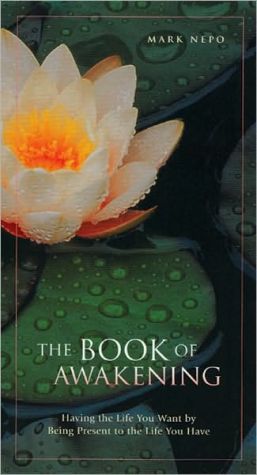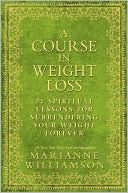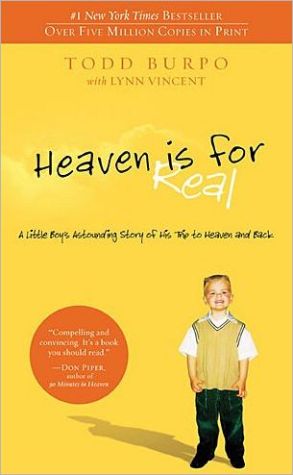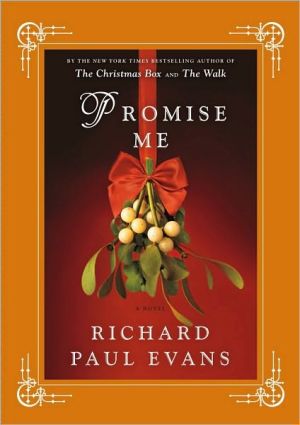Kindling the Celtic Spirit: Ancient Traditions to Illumine Your Life Through the Seasons
In this beautiful treasury of sacred wisdom, Mara Freeman shares the rich legacy of the Celts — the festivals, gods and goddesses, saints, faeries, music, poetry, and storytelling that anchor this magical tradition. Discover myths, rituals, recipes, and crafts for every month of theyear. Honor Saint Brigit with a prayer in February, or ensure a merry start to May with a bowl of frothy syllabub. Come together with friends and neighbors to celebrate community in the high days of August, then...
Search in google:
In this beautiful book, renowned Celtic authority and gifted storyteller Mara Freeman shares the richness of the Celts -- the festivals, gods and goddesses, saints, faeries, music, poetry, and storytelling that anchor this magical tradition. Lovers of all things Celtic will discover stories, rituals, recipes, and crafts for every month of the year. Traditional blessings, ancient lore, and guided meditations inspire readers to reconnect with the rhythms of the natural world, view the sacred as an integral part of every day, hone their intuition and give free rein to the imagination. With Kindling the Celtic Spirit, they will rediscover the wisdom and healing power of nature, cultivate and honor the soul as if it were the earth, and allow the charm of ancient Celtic spirituality to enchant, every season, year after year. Elizabeth Murray A very important work...[a] long awaited and much needed inspirational manual...
January\ The Welcome Of The Door\ I pray for a house roofed, sheltered, shining a house wherein is honor and welcome.\ Irish, Seventh Century\ Step over the threshold into an old-style Irish house, and imagine this is your home. You find yourself in a simple, one-room dwelling with a hole in the middle of the roof. Here you gather with family and friends around the fire in the center of the room, which reminds you of the light and warmth of the sun. In the older, round house, you feel safe within the compass of the circle. In the later, rectangular house, the four corners stand about you like guardian angels. Benevolent household spirits weave an unseen mantle of protection about you.\ The earthen floor just inside the threshold of old cottages in the south and west of Ireland was known as the "welcome of the door." Upon entering, a visitor would stand here and say a blessing for the household.\ This was holy ground, and dirt scraped fromit was good for curing a number of ills. An in-between place, it was sacred because it marked the boundary between the life of the family within and the wide world without.It was neither "here" nor "there," and so it allowed a crack to open between the worlds where the powerof the Otherworld could flow into our own.\ The month of January finds us standing on the threshold of a new year, and an invitation awaits us: to create a space in our lives where we can begin to live in a sacred manner. Celtic spirituality teaches us that we do not have to go further than our own homes in order to begin.\ The First Celtic Houses\ Celtic people of the Iron Agelived in isolated farmsteads scattered throughout the countryside. These were known as ring-forts (in Irish: rath, dún, or lios), but they were not really designed for defense. A ring-fort consisted of a circular bank of earth or stone, possibly topped by a wooden fence and in some cases surrounded by a ditch. In the center stood the house, farm buildings, and granaries: circular structures made from wooden posts, clay, and wattles, with a high, conical thatched roof.\ The hearth-fire was kindled in the center of the floor, and the smoke escaped through a hole in the roof. They had little furniture apart from a few wooden trestles, stools, and cooking pots, and at night they slept on beds of straw and rushes, covered with rugs and animal skins.\ Nowadays all that remains of the first Celtic homes are circles of earth and stone, places of mystery long thought to be the haunts of faery folk.\ Sacred Hearth\ Until quite recently in Ireland, nobody built a house before consulting the spirits of the land. Four piles of rocks or four rods were set up in the chosen location the night before. If they were found to be undisturbed in the morning, building could proceed, but if they were fallen or scattered, a new place had to be found, for this was faery ground. It would not do to build on the path to a lios, or faery fort, or on the lios itself, on the site of a forge, or on a height. When the foundation stone was laid, an offering — a silver coin or an animal skull-was deposited beneath it, to invite prosperity into the new house.\ Old rectangular Irish houses were oriented according to the passage of the sun. The most auspicious place for the front door was facing east or South, where the sun is strongest. The room facing west was associated with sunset and death and was reserved for family mementos, old people, and the dead, who were laid out for their wake, after which they left the house for the last time through the back door. In the center of the house stood the sacred shrine of domestic life: the hearth-fire.\ The sacred design of four quarters surrounding a center is a template of cosmic harmony. In many ancient cultures, cities and temples were built according to this pattern.\ Archaeological excavations show that late Iron Age Celtic sanctuaries were usually oriented to the four directions. Ireland itself was divided into four provinces, with a fifth one representing the center. In the central province, called Meath, meaning "middle," rose the hill at the sacred heart of the land: Tara, seat of the high kings. Scotland and Wales may have been divided up in the same way.\ The old Irish house brought sacred space into everyday life. No matter how poor or oppressed, families were from birth to death encircled by this protective fourfold pattern. Their lives revolved around the fire as the life-giving sun of their universe.\ The house also connected the family with the invisible abodes of the gods above and below. Like other Indo-European peoples, the Celts viewed the physical world as situated between an Underworld and an Upperworld, with a vertical axis mundi, or World Tree, joining all three worlds together. In some western cottages, pots were buried in the earth in front of the hearth-fire for good luck. This was, perhaps, a memory of the marvelous cauldron of the Underworld gods, which was always full of delicious food. The Upperworld was represented by the roof and smoke hole in the thatch above the fire. Even though most houses did not have a central support, the ridgepole that runs along the top is still called a "roof-tree" and is considered one of the parts of the house most vital to the family's well-being, spiritual as well as physical. In Scotland, a common toast was "To your roof-tree!" The smoke hole was the door through which the gods sometimes descended when they wished to enter the human world.\ Tús agus deireadh an duine tarraingt ar an tine.The beginning and end of one's life is to drawcloser to the fire.—Irish Proverbs\
The magical art of Celtic music and storytelling Recipes for many delicious traditional Celtic dishes How to address a faery and the names and traditions surrounding the Celtic gods Celtic greetings, toasts, and blessings The meaning of the ancient festival of Saint Brigit A wealth of ancient rites and rituals The sacred sites found throughout Ireland and the British Isles Trees of the Sacred Grove Animal lore and tales
\ Alexei KondratievMara Freeman...has a profound understanding and appreciation of [Celtic] tradition, and a talent for sharing it effectively.\ \ \ \ \ Elizabeth MurrayA very important work...[a] long awaited and much needed inspirational manual...\ \ \ John MatthewsThis is an excellent book, offering a bright window into the Celtic World.\ \ \ \ \ Knoxville Sentinel...a tempting invitation to the world of the Celts.\ \ \ \ \ Margie McArthur...a stunning book, rich in enchantments, legend and lore...abounding in practical wisdom to nourish body and soul.\ \ \ \ \ Matthew FoxMara Freeman has written a book that is fun, deep, playful, serious, useful, magical and enlightening.\ \ \ \ \ R. J. Stewart...Mara Freeman brings a depth of scholarship and clarity of presentation that outshines the rest.\ \








